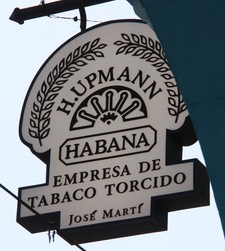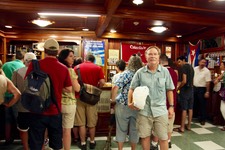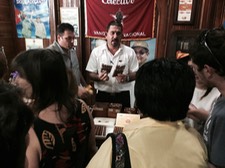
Our first stop on day 2 was a cigar factory. On the way to the factory, Lazaro gave us some info about the process. And our guide provided more information. Each cigar is done completely by one person called a roller. Depending on how good they are they can do 80-150 cigars per day. They get bonuses for making production goals. They get an allotment of some cigars a day (Lazaro was not sure of the number). This factory produce 25,000+ cigars/day.
I asked Lazaro if there were heart issues with handling tobacco all day. He said not really and that the worst health issue was repetitive motion injuries and posture issues. You could tell that there were no Environmental, Safety, and Health regulations related to ergonomics.


Originally there were 2 major factories in Cuba, but after the revolution they were both government owned but still produce the same brands—11 in total. (Note that the original owners of the factories left Cuba taking the seeds for their tobacco and went to the Dominican Republic were they recreated their cigars). The factory that we visited produced 7 brands including Monte Cristo (strong), Cohiba (medium), and Romeo & Juliet (the mildest). Our guide claimed that Cohiba was the best cigar. My good friend Bob H., who is a cigar connoisseur, recommended H. Uppmans. (Bob—chime in with a comment if you want to opine on the cigars).
The working conditions look primitive by our standards. But, they are self-contained work stations and have what the rollers need close at hand. The factory was not air-conditioned but there were open windows and fans. It was close to 90º outside and very humid. So inside it was pretty hot by my standards. The workers are both male and female (roughly 50-50). I didn’t see anyone smoking cigars, but there were workers smoking cigarettes as you can see in the picture.
Each cigar has 4 different kinds of tobacco rolled into the cigar. The kind and amount of the leaves gives the cigar its distinctive taste and aroma. The tobacco is dried and aged for 3 years before it is used in the cigar. After the tobacco is rolled into its shape it is placed in a press for at least 20 minutes. In the bottom picture, the blue racks are what the cigars are pressed in. The pressure is provided by a screw press.
After the cigar has been pressed, the final wrapper is added. The final wrapper is from tobacco grown under coverings, appropriately enough called shade tobacco. I (Chuck) have seen shade tobacco growing in Connecticut. The wrapper is only aged 6 months leaving it softer and easier to wrap. Each wrapper is a single piece from one half of a tobacco leaf.
Finally the cigar is inspected for quality (length, diameter, color, etc). After it passes it gets the ring put on and is ready for sale.
A block away was a store where we went to buy some cigars. It was super crowded, but Lazaro went behind the counter and acted as a conduit between us and the clerks which helped. I took Bob’s advice and bought a box of H. Uppmans cigars (one of them shown below). According to the clerk, as translated by Lazaro, they are some kind of special reserve cigars. I got the humidor they came in for “free”.



The Cigar Store. A hot Chuck with his purchase Lazaro behind the counter

